Dogs are sweet animals, and many people have them as part of their families. They are loving, loyal, and always ready to protect their human friends. However, there have been cases of dogs attacking humans, and some of these attacks have been fatal. Research shows that certain dog breeds are more aggressive and have caused more fatalities than others. But before we start judging these dogs, let us look at what really causes them to be aggressive
What is Dog Aggression?
Dog aggression is a behavior shown by all dog breeds. The behavior can continue or come to a stop at a certain point depending on how it is approached. There is a wide range of behaviors that a dog can exhibit that show aggression. These include:
- Growling
- Showing teeth
- Snapping
- Biting
- Snarling
- Charging forward at a person
- "Muzzle punch"
- Any other unusual behavior from your dog
In the case of biting just remember that your dog will give some type of warning before it bites.
Reasons for Aggression
Illness
When they are not feeling well, dogs instinctively protect themselves. If your dog suddenly starts to show aggression, it may be an indication that it is not feeling well. The illness can affect the dog’s brain which may trigger aggression. Dogs should be taken to the vet immediately after the owner starts to notice sudden changes in behavior.
Possessiveness
A dog will become aggressive when it is protecting its territory. It may become aggressive when it feels another dog or a human is invading its space. Some dogs may attack and bite an intruder even if the intruder is a friend. The dog will be protective of the boundaries which it usually patrols.
Your dog may also become aggressive when it is possessive of its favorite toys or its food bowl, and it feels like you want to snatch them from it. The level of aggression in your dog may vary as it might not care when you go near it while it is playing with one toy and growl or show its teeth when it is playing with another.
Protectiveness
Dogs naturally have a protective instinct. Some dogs are extremely protective of their owners and become aggressive when they receive visitors as they think that the visitors are intruders. Mother dogs may show aggression to anyone who tries to approach her puppies. Protective aggression is however not present in puppies as they are yet to develop that instinct.
Fear
Dogs that are afraid will try to escape from the source of fear, but if they cannot, they will use aggression as a defense mechanism. Dogs that are being punished may bite or growl at a person when he or she approaches the dog. It is not advisable to turn your back on a fearful dog because they will come up from behind and nip. The dogs will only attack if there is no other way for them to get out of their situation.
Social aggression
Dogs that are treated like kings and queens believe that they are the bosses of the house. They will, therefore, become aggressive towards other family members and other people. If this behavior is not put in check, it will keep getting worse.
Pain
When a dog is in pain, it will become aggressive to protect itself from going through more pain. All dogs, regardless of breed, age or sex are prone to pain-elicited aggression, and it is advisable to be extra careful when handling an injured dog even if it has never attacked you before.
Frustration
Dogs might become aggressive when they are prevented from doing something they love or getting something that excites them. This behavior is similar to a child’s behavior when he or she has been forbidden from getting ice cream when the ice cream truck passes by.
Top 10 Most Aggressive Dogs
1. Pitbull
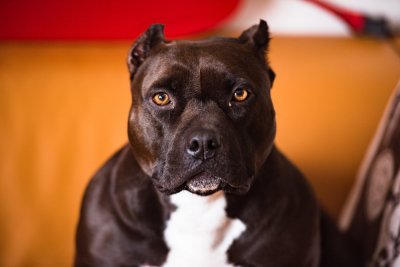
Te may not want to believe it, but Pitbulls naturally have an aggressive temperament. They were initially bred to chase and catch animals and hold them down until their master arrived. Pit bulls start to develop their aggressive personalities around three years of age. Pitbulls are excellent fighting machines, and they are deadly in a confrontation. They might be so aggressive that you cannot have other pets in the house. Because they are bred to be alphas, you should ensure that your Pit knows its place to prevent It from switching into alpha mode as it can become dangerous when it does. Pit bulls should, therefore, not be handled by an inexperienced person so as not to confirm the fears that they are dangerous dogs.
Despite all of this, the strength and bravery of Pit bulls have driven them to do acts of heroism. They have rescued humans and animals from dangerous situations, and they have even put their lives on the line to protect their owners. Many Pit bull owners will also tell you that their Pits are loving and caring animals and they like being around their humans.
From what we have learned about Pit bulls we can, therefore, conclude that Pit bulls, despite their reputation, are good pets as long as they are kept in the right conditions.
2. American Staffordshire Terrier
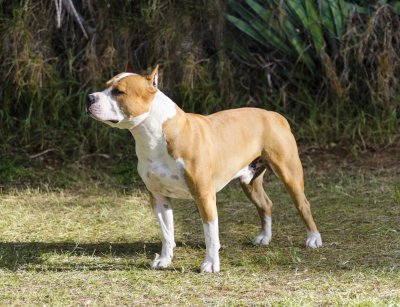
Also known as the Amstaff, the American Staffordshire Terrier is a strong muscular breed of dogs. They are active and require daily exercise to maintain their muscle tone. This means that they need to be kept in homes with large yards for them to run around freely; otherwise, they will become destructive. American Staffordshire Terriers love to chew; therefore, it is advised that you provide your American Staffordshire Terrier with plenty of bones and chewable toys.
American Staffordshire Terriers are loyal and not aggressive towards humans, but since they were bred to fight, they may become aggressive; especially towards other pets. That is why it isn’t advisable to keep this breed, especially older ones, when you have other pets.
The American Staffordshire Terrier may develop aggression when it becomes neglected. It shouldn’t be left or tied up alone and instead it needs to be around the company of loving humans.
3. Rottweiler
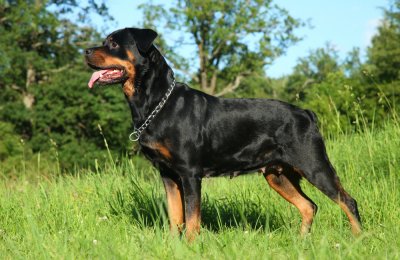
Rottweilers are muscular dogs, and they need a large space for exercise. They are known to cause many fatalities in the US, but they aren’t as bad as they are made out to be. Rottweilers are naturally aggressive, but they are usually not dangerous to humans. They are intelligent and loyal dogs who usually study their environment before responding to situations.
Rottweilers are territorial animals, and they can be aggressive with other dogs. They also like being dominant and will test for dominance in their homes. Fortunately, Rottweilers are also good at obeying their masters and, therefore, with early and proper obedience training, you can control their territorial instinct.
With reputable breeding, good treatment and proper socialization Rottweilers make great companions and will be playful and silly like any other dog. Some Rottweilers even carry the proud title of “service dogs” and are very friendly to people.
4. German Shepherd
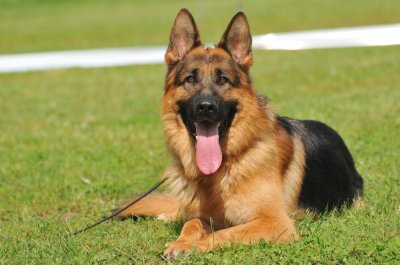
German shepherds are usually trained as guard dogs due to their naturally aggressive behaviors and tendencies. They not only possess strength and intelligence but are also loyal and overly protective of their human friends. These traits make German shepherds dangerous as they may attack strangers thinking that they are threats rather than friends.
German shepherds should not be kept in an enclosed space because this will cause them to build up too much energy with nowhere to release it. That is why they chew and destroy things when left alone in the house.
Aggression from this dog breed can also arise due to trauma. The dog might have been abused or neglected by its previous owners and therefore uses aggression as its defense mechanism. It is best to train German shepherds when they are still young, and the training should be done by a professional so that you can live peacefully with your dog.
5. American Bulldog
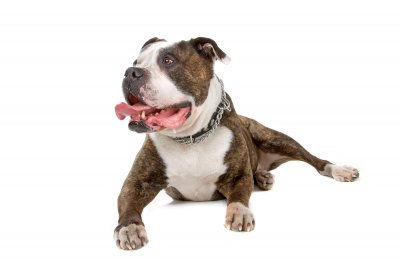
This is a sturdy, muscular breed that makes great companions and protects its human friends. The breed has fighting roots which have caused many people to fear them. They also have a somewhat intimidating stance and ferocious barks which might scare people and get them thinking that they are a dangerous breed
American Bulldogs do not attack people. They might only bark when they see strangers, but they will not charge at them. The Bulldogs, however, are dog aggressive, and they will also ferociously chase cats. To prevent the Bulldogs’ aggressive behavior, they need to be introduced to other pets as puppies so that they can get along well and they should also interact with people more often to bring out their more friendly side.
6. Mastiff / Bullmastiff
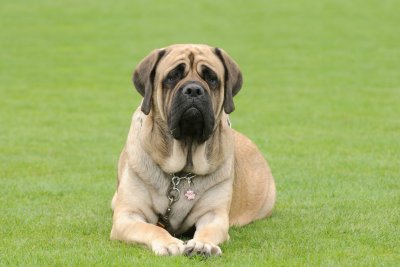
This is another giant breed that originated from England. Mastiffs are usually gentle, but they can become aggressive due to various reasons. A mastiff’s behavior towards other dogs and cats will depend on how they have been raised. Those that are introduced to other animals at a young age will get along with them and not treat them as prey.
Mastiffs are naturally protective, and when they are trained to be watchdogs, they will rush to and corner an intruder until its master arrives. They, however, do not bite but rather growl at the intruder. This trait makes mastiffs excellent family dogs. Young puppies may not differentiate between intruders and friends, but older mastiffs are watchful and can tell when a person has ill motives causing it to take charge. Mastiffs are gentle with children and are always ready to help them; however, they can even let themselves be pillows for the children.
7. Husky
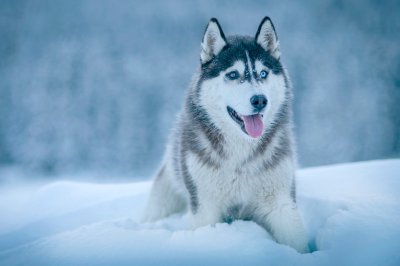
Huskies are lovable animals that are fun to be around. They are very vocal and always express their feelings. Huskies are not aggressive by nature, but this doesn’t mean that they will not attack when provoked.
Huskies were bred to pull sleds on the snow and therefore they are quite energetic. This means that they need to be let out to get enough exercise; otherwise, they will become destructive. They also shouldn’t be left alone since they were bred to work with humans and in packs. Huskies appreciate being in the company of humans, but they have a high prey drive towards small animals, and they cannot be trusted with them. Your Husky will go crazy and chase after a squirrel or any other small animals without heeding to your commands, and that is why they should be walked on a leash or let out to play in a fenced area. Huskies will live harmoniously with kids as long as the kids are not mean to them.
8. Alaskan Malamute
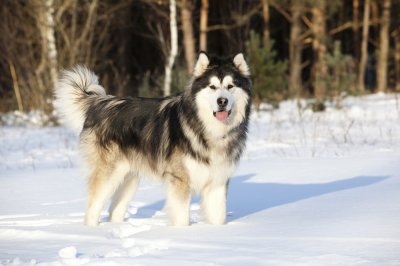
Alaskan Malamutes are sometimes confused with Siberian Huskies, but they are larger than the Huskies. They are usually seen as dangerous due to their big size. As with many other breeds, Alaskan Malamutes don’t like to be left alone but spend time with people, and they are very friendly to children.
Young malamutes are usually very playful and curious. Malamutes never attack first, and they are always careful around new people. But as expected from most dogs (as well malamutes) they can be aggressive towards other dogs, especially of the same sex, as they fight for dominance. However, proper socialization with other dogs will enable your malamute to get along well with them, and this should be done when they are still pups.
9. Wolf-dog Hybrid
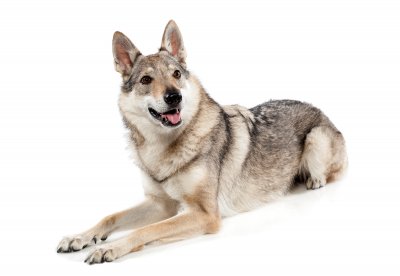
Awolf-dog is a cross between a wolf and a domestic dog. There has been a lot of debate about whether wolf-dogs should be bred or not and some states have even made it illegal to keep them as pets. It is not easy to keep wolf-dogs as pets, more so around children, as some can be uncontrollably aggressive.
Wolf-dogs, especially those with a higher percentage of wolf genetics, lean more on their wild side and therefore they cannot be kept in the house as they will become destructive. As a result, wolf-dogs need vigorous training for them to interact well with people.
Many families have failed to keep wolf-dogs because of their aggressive behavior. They are used to the wild and keeping them at home is not very exciting. Wolf-dogs are also hard to train because, unlike the domestic dogs, they are not as eager to please their trainer and humans. Some wolf-dogs may also be too possessive of their human companions that they don’t allow other people to get near them.
10. Doberman Pinscher
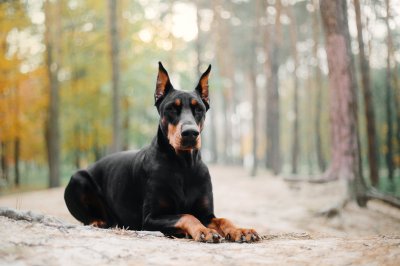
The Doberman pinscher is an obedient, energetic, intelligent, and alert; basically, all the good traits that a dog should have. It is a large dog with an impressive and fearsome stance. The breed was created for personal security, and so they are instinctively aggressive towards strangers who they may perceive as threats. The Doberman will also be aggressive towards other dogs.
Dobes, as they are sometimes called, need enough exercise to release energy and therefore they need enough exercise. The dogs also love being around people and therefore, they should not be left alone in the house as they will develop separation anxiety which will make them more aggressive. Dobermans that are social have most likely gone through proper training at a young age.
Dogs that can also be Aggressive and it’s Better to be Careful with Them
1. Chow chow
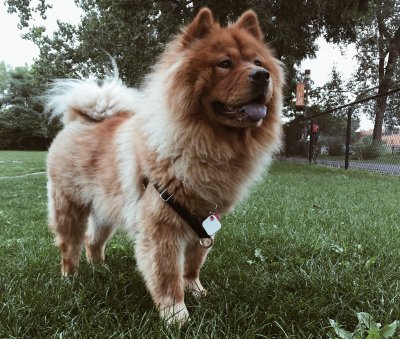
Chow chows are beautiful fluffy dogs, and they are becoming more popular pets among dog owners. But behind their fluffy selves are aggressive and stubborn dogs whose temperament is somewhat tricky to manage.
Chow Chows have a natural hunting instinct, and they shouldn’t be left alone with small pets. They are also highly dominating and are aggressive towards their male counterparts as they fight for domination. Chow chows, therefore, should either be raised alone or alongside another dog of the opposite gender.
Chow chows are also known to be impatient and will retaliate when teased. That is why chow chows should not be left alone with children. Properly trained chow chows are however sweet to be around and are great family dogs.
2. Cane Corso
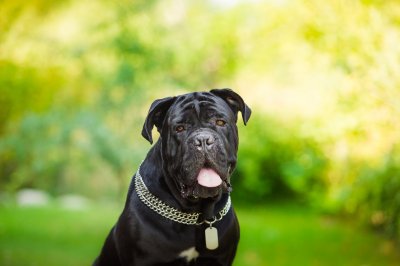
Cane Corsos are a giant breed of dogs that were bred as guard dogs and to hunt big animals. They take their responsibility as guard dogs very seriously and no matter how social it will always put its humans first.
Cane Corsos have a high prey drive, and if untrained they will chase and kill smaller pets. Due to their active nature, Cane Corsos should be allowed to exercise for a certain amount of time each day. They are also highly territorial and will act aggressively towards other male dogs. They have massive, powerful jaws that could cause severe damage to their victim.
The Cane Corso cannot be managed by an inexperienced dog owner, but their aggression can be controlled through proper training so that they are aware of their position in the family.
3. Perro de Presa Canario
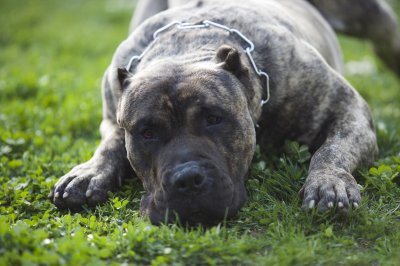
This breed, also known as the Canary Mastiff, is a fearsome dog whose appearance can intimidate any person. They are bred as fighting dogs, and therefore, they are highly aggressive and can only be handled by experienced dog owners.
The Perro de Presa Canario are excellent guard dogs, but they can also be highly dangerous if nothing is done about the dog’s aggression. The dog needs attention and should spend a significant amount of time close to its family to prevent it from becoming destructive. Their aggressive nature has made the dogs to be banned in some countries
With the right training and proper treatment, Perro de Canarios are docile and obedient dogs who love to be around their family members. Luckily, they are not as demanding as other dog breeds.
4. Kangal
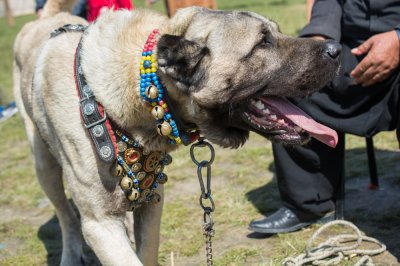
Kangals are a gentle breed of dogs that can be trusted around homes. They are calm around children and are protective of their owners. They also treat new people well and once they mark the territorial boundaries, they can recognize new people and animals.
Since Kangals are naturally territorial dogs, they tend to be dog-aggressive towards male dogs; especially those of dominant disposition. The Kangal should not be locked in a house or a small space as they will become destructive. Kangals are usually aloof towards new people until they get used to them. They are not dangerous but rather obedient and loyal, also they will not become aggressive towards people for no reason.
5. Tosa Inu
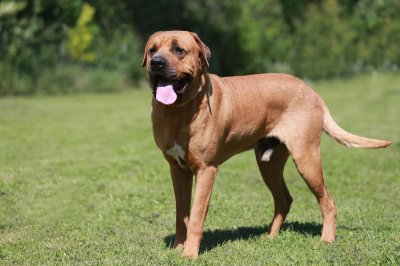
Tosa Inu is a large breed of dogs that was created in Japan. The breed is considered dangerous, but this is not all that true. Tosa Inus are calm, obedient dogs that would make great house pets since they do not mind being kept in the house. They were bred and used as war dogs, and some places in Japan still use them as fighting dogs, but they are not too violent to injure themselves during fights, and this makes the breed excellent guard dogs.
Despite their reputation as aggressive killer dogs, in reality, Tosa Inus are the opposite provided they have been socialized. They love to be around people and are even friendly towards strangers. They also never attack first, and they have a high tolerance for pain. They are calm and patient around children, although they should not be left unsupervised with kids.
6. Chihuahua
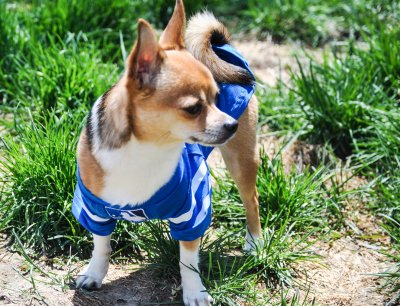
Anyone that owns a Chihuahua will tell you that they are proud, stubborn dogs that will fight back despite their small size. Chihuahuas are usually aggressive little dogs, but this is because most times their owners are not keen on their behavior and believe that they do not need as much training as large dogs.
Chihuahuas may have aggressive behavior because they think they are in charge. They also become aggressive when scared. Without proper socialization, they might growl and snap at strangers and behave aggressively towards other dogs. Chihuahuas that are treated like babies will be more aggressive because they have a feeling of self-importance and dominance. People who own Chihuahuas should, therefore, treat them as they would any other dog so that they know their position in the family.
7. Akita Inu
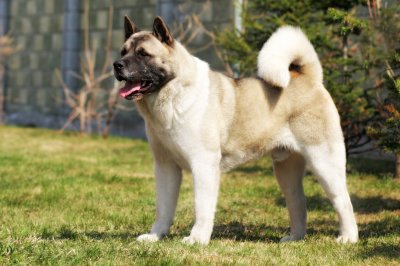
This is a dog breed from Japan that was created for hunting big game. The Akita is a large and powerful breed that has an aggressive character. They can quickly change from playful to aggressive, and therefore, they shouldn’t be left alone with children because things can get real ugly quickly.
Akitas hate being teased or provoked and a lot of things can trigger their aggression. Staring the dog in the eye may cause it to think that you are challenging it and it may retaliate. They are also imposed on dominance and will try to challenge you for dominance. Akitas that are treated abusively will also become aggressive, but those that are raised in the right conditions are sweet, social, and lovable.
8. Bulldog
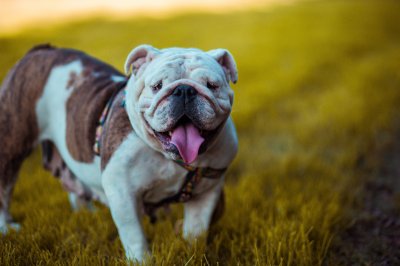
Bulldogs may appear fierce, but they are actually very gentle dogs. When they were first created; however, they were quite aggressive because they were developed to bait bulls, but they have carefully been bred to remove this aggression leaving us with sweet, cuddly dogs.
Bulldogs tend to be aggressive around their food. They will guard their food fiercely, and children should be kept away from them at this time. They should also not be made to share food with other pets.
Bulldogs will also become aggressive towards other male dogs if they haven’t been socialized well. Otherwise, they are sweet, obedient, and somewhat lazy dogs that would love to lie at your feet the whole day.
9. Boxer
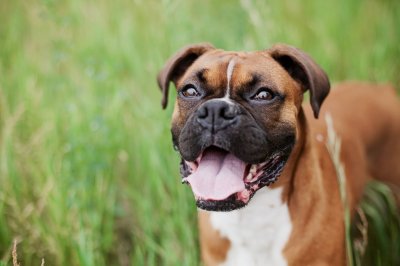
Boxers are a large breed of dogs that have an intimidating appearance. The breed was initially developed in Germany as fighting dogs, but they have evolved to become sweet and calm dogs that would make great family dogs.
Boxers are full of energy, and they need somewhere to release their energy lest they become aggressive. They are active both mentally and physically and need a lot of exercise for both to prevent them from destroying things in the house. Boxers are not known to be aggressive towards people, but they are very protective of their families and they are cautious of new people. They will become aggressive if they suspect that someone is a threat.
Boxers also do not appreciate being teased, and therefore they should not be left alone with kids. Due to their strength, they may push the children and cause them to fall hurting themselves. The boxer’s character will, however, be largely determined by the amount of training it has received and how it has been raised.
10. Australian Shepherd
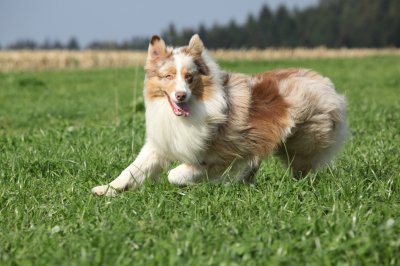
Australian shepherds were developed as working dogs to help with cow herding. This is a trait that they have carried with them through generations. They are social and loyal to their families. The dogs are highly intelligent and energetic, and they need an outlet for their energy.
Aussies get bored easily, and they may decide to keep themselves busy by chewing on things, digging, or barking. They will become aggressive if they do not have something to challenge them mentally. Their strong herding instinct also largely determines their behavior depending on where they live. Keeping them in urban areas will cause them to chase after cars and other moving objects, and this may cause accidents if they run into busy roads.
The Aussies have a strong protective instinct and will protect their families from any threats. They are good with children, but they will try to herd running children, and this may portray them as fearsome by the children. With proper socialization, Aussies can get along with other pets in the house.
11. Great Dane
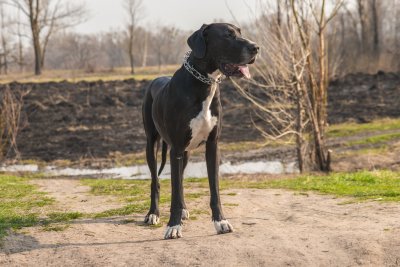
The Great Dane is a giant breed of dogs that make great family pets. They are gentle for their size and good with children. They do not need a lot of exercise like other giant dog breeds, but they need a lot of space.
Young Great Danes are highly energetic and can be very destructive and need supervision at all times. Great Danes vary in character. They never fail to announce when visitors come, but some are highly territorial while others are friendly with all people. The dogs will live peacefully with other dogs if properly socialized.
Great Danes may use their size to try and dominate the house, and they need obedience training to keep them in check. They should also not be left unsupervised with children. Other than that, the breed is not dangerous and provided they have enough space, they make great family pets.
12. Dalmatian
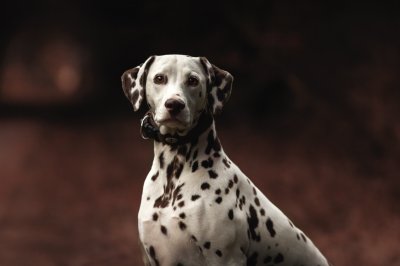
The Dalmatian is a unique breed of dogs that are excellent to keep as pets. It is a versatile breed that was initially used to guard carriages when the master was not around. They are outdoor dogs and keeping them locked up in the house or failing to stimulate them mentally will cause them to become destructive.
Dalmatians can be trusted with children as they are affectionate and love to play. They are however, rowdy in nature and tend to jump on people and therefore they should not be left unsupervised with children; as they may hurt them unintentionally.
Depending on how they were bred, the Dalmatian’s behavior will vary. Poorly bred Dalmatians may have a ton of behavioral issues that might be difficult to manage. Dalmatians also tend to lean on their shy side which might make them anti-social, and their training always needs to be accompanied by positive reinforcements to make them social.
13. Saint Bernard
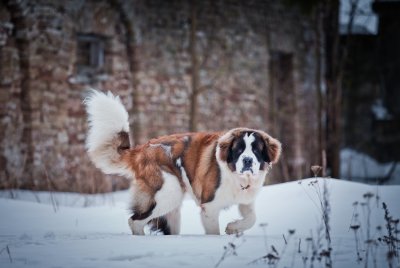
This large breed, as the name suggests, are angels in the form of dogs. But this is only when they are properly trained and treated well. Like any other breed, the Saint Bernard may become aggressive when subjected to abuse and inadequate training.
Saint Bernards need a lot of exercises to release their energy. Keeping them in the house or tiny spaces will cause them to become aggressive and destructive. They also need to be familiarized with people and unusual sights and sounds to prevent them from shying off or becoming aggressive. The male dogs are dominant and may not get along well with other dogs. They will also test your dominance, so they need an owner who can keep them in their place.
14. Collie
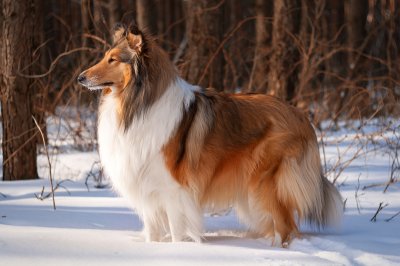
Collies are a breed of herding dogs that are pleasing to be around with. They rarely get aggressive, but when they do there is a reason for it. When Collies become aggressive, they give warning signs beforehand; making it easy to get to the root cause of the dog’s aggression.
Collies are smart and active dogs and should not be locked inside the house because they will use their energy to destroy things in the house. They also shouldn’t be left alone because they enjoy being in the company of their human friends. They are dominant and might use aggression to try to be the boss in the house, so they need patient owners who know how to manage the dogs.
Collies have strong herding instincts, and they may start to herd running children; because to them, the children are young sheep that need to be herded. The children might become frightened of the Collies, but the dogs are not aware of this and are only doing their job.
15. Labrador Retriever
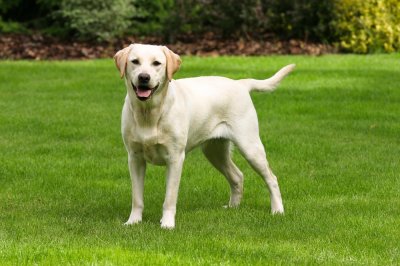
The Labrador Retrievers are the most popular breed of dogs in many American households. Every person who owns a Labrador will say they are gentle, lovable creatures that bring delight to every dog lover’s heart.
Labradors are not aggressive in nature, but they are highly energetic dogs, and they need an outlet for their energy. Locking them up in the house will cause them to become destructive. They also need to be mentally stimulated; otherwise, they will get rid of their boredom by chewing on and destroying things.
Labradors get along well with people and other dogs. Unless it is abuse, it is not easy to annoy Labradors as they see the good in everything. They are gentle and patient with children, but they might unintentionally hurt the children while playing due to their size and weight. Young labs are however very active and clumsy, and they should not be left alone with small children. Otherwise, the possibility of Labradors becoming aggressive is slim to none.
Bottom Line
From the above information, we can conclude that most dogs are not as aggressive as they are made out to be, provided that they come from reputable breeders and receive proper training. It is also important to note that it is not advisable to leave dogs alone with children no matter how much you trust the dogs as they may sometimes act out and unintentionally hurt the children.
References
- dogsbite.org, 13-Year U.S. Dog Bite Fatality Chart - 2005 to 2017
- dogsbite.org, Breeds of dogs involved in fatal human attacks
- ASPCA, Common Dog Behavior Issues:Aggress
- Pet comment








0 Comments